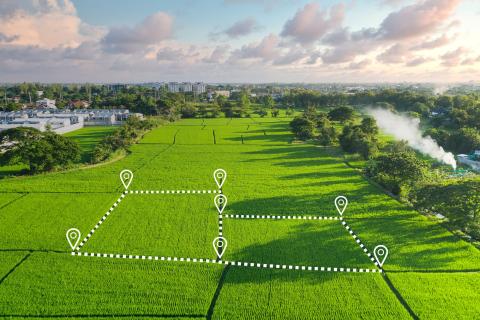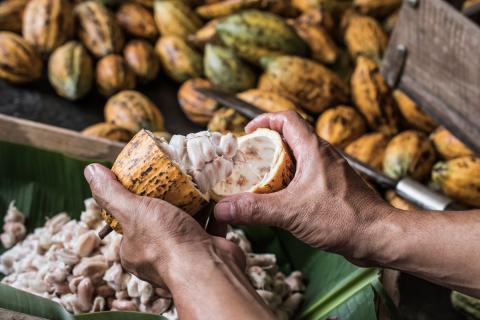Mangrove mania: Snapshots from a field audit
During a field audit in mangrove forests, our auditor team learned about the woes and wonders of this enchanted environment.
During a forest audit in West Kalimantan, Indonesia, the NEPCon auditors experienced all the charms of the Indonesian mangrove. This tidal ecosystem plays a key role in coastal zones around the world, providing habitat for numerous species, storing carbon and protecting the hinterland from tsunamis.
The auditor team spent a week in the mangrove assessing the management of two operations against the Indonesian FSC standards, the FSC Controlled Wood standard and NEPCon's LegalSource Standard. The audit resulted in triple certification of the Asian Pacific Consulting Solutions (APCS) group scheme including the two inspected operations, PT BIOS and PT Klia.
A strange stilted world

Mangrove trees are bizarre creatures that are extremely robust. They are able to withstand desiccation as well as tidal flow, high waves and salty water.Yet they are disappearing 3-5 times faster than other forests, says UNEP.
Mangrove secrets: did you know...
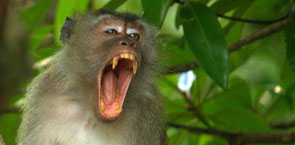
...that mangroves provide multiple ecosystem services? For example, they support a vast array of wildlife species. And almost 80% of the world's fish catches depend on mangrove forests directly or indirectly.
Meeting up
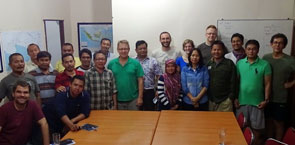
The assessments began with an opening meeting at the office of the PT Klia operation. The company presented the organisation, its procedures and documentation related to the group scheme.
Deciding where to go
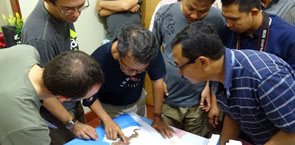
Staff of the BIOS and Klia operations, WWF and NEPCon planned the journey to ensure field visits covered all the certification aspects.
The auditors travel to the operation
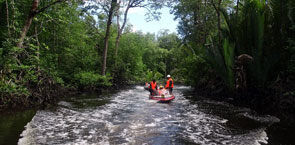
Rivers and other watercourses are the highways of the mangrove. Mangrove forest workers travel to the sites in small boats. The auditor team followed the same route.
Providing benefits for local people

People living in the neighbourhood depend on the mangrove forests for their livelihoods. APCS has set up a Corporate Social Responsibility Programme and conducted social impact assessments to ensure good social practice.
Debarking the stems
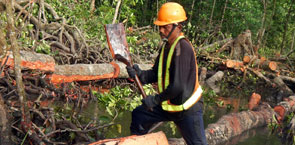
The mangrove constitutes a special working environment. Health and safety aspects were carefully considered throughout the field inspections.
Health & safety document review
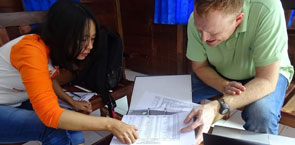
Ms. Yessy Anggreni, Occupational Health and Safety expert at PT BIOS, looks at accident reports together with NEPCon Executive Director Peter Feilberg.
Timber landing place
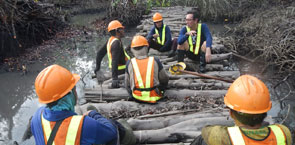
Extracted timber is placed in 'landing places' on the water, similar to a storage site on land. They are also convenient resting places for tired forest workers and auditors.
A mangrove management expert
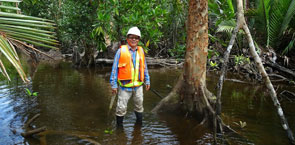
Mr Fairus Mulia is the Director of both the Klias and BIOS operations. He has intimate knowledge of all the challenges involved in this special branch of forestry.
Shipping
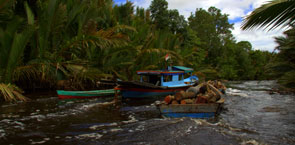
Shipping timber takes on a quite literal meaning in the mangrove, where the timber is floated and shipped by small boats.
Providing benefits for local people
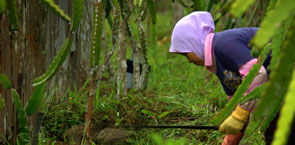
The BIOS and Klias operations allow local villagers to collect seafood and the Nipa palms used in traditional roofing.
A roadless wilderness
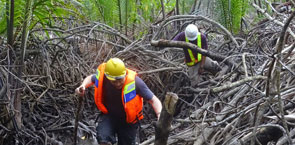
There are no roads in the mangrove. "There were times when we became acutely aware of that," notes Chris Schriver, NEPCon South East Asia Manager and member of the auditor team.
Wild waterways
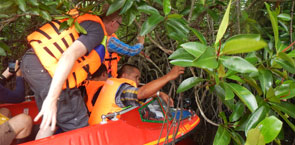
Even the waterways are like a maze. They are difficult to navigate unless you know the area by heart.
Underwater tree nursery

Life in the mangrove follows the rythm of the tide. Planting takes place when the tide goes out. When the tide comes in, timber is floated out from the forest.
Checking facts
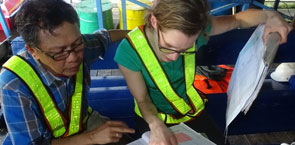
NEPCon auditor Ditte Steffensen checks facts and figures together with Mr Fairus Mulia, Director of both forest operations.
Crabs, crabs, crabs....
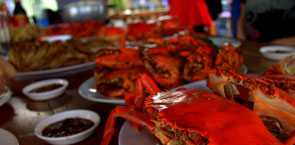
Crabs, mud lobster and river prawns are the staple food of the mangrove. The auditor team had plenty of this luxury food during their stay in the mangrove. "Having crabs at breakfast was a little unusual," recalls team leader Mateo Cariño Fraisse.
Adventurous auditing
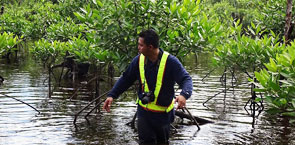
There's more to certification than bureaucratic paperwork. Sometimes an auditor needs to be as intrepid as a hardy adventurer.
Dirty auditing
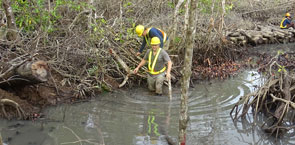
Mud is the mainstay of mangroves. If you don't believe it, go auditing in one!
Reporting
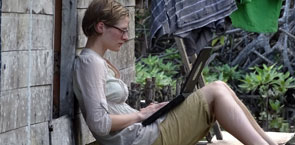
Back at the small camp after a full day of field inspection, auditor Ditte Steffensen carefully enters her observations whilst they are still fresh in her mind.
Dreamy dusk
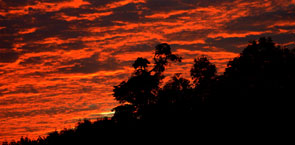
A majestic sunset in the mangrove. With the loss of mangrove forest, the world loses some of its magic along with biological diversity, food security and coastal zone resilience. Might this group scheme be part of the solution to keep them standing?
> Read this article in Indonesian
> Article about the triple certification scheme
Photos by Ditte Steffensen, Peter Feilberg, Mateo Cariño Fraisse, Christian Schriver.
